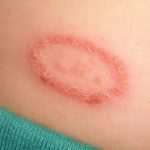 One of our readers suggested this post. The question was, how can I tell if a spot on my skin is an infection? They had a flaky area on the buttock for a few weeks. It was not necessarily getting bigger, but it was not going away either, and was a bit irritated and scaly. Below are the questions I asked:
One of our readers suggested this post. The question was, how can I tell if a spot on my skin is an infection? They had a flaky area on the buttock for a few weeks. It was not necessarily getting bigger, but it was not going away either, and was a bit irritated and scaly. Below are the questions I asked:
1 – Is the area red?
2 – Is the area swollen?
3 – Is the area warm to touch compared to other parts of the body?
4 – Is the area tender?
5 – Was there any trauma to the area, such as from a fall, of from an injection? Maybe there is residual inflammation from the trauma and there is not really infection
The above signs and symptoms are features of inflammation, which usually accompanies infection. Inflammation is usually most dramatic with bacterial skin infections. Also, with bacterial infections, the inflammation comes on fairly quickly and sometimes, the affected person may even have a fever. Pus is also a prominent feature of bacterial skin infections, however it is not always present, depending of the causative bacteria.
There are some uncommon bacteria, such as Mycobacteria, which cause less significant inflammation. These types of bacteria are very slow growing, so it takes a while for the signs of infection to manifest on the skin. Often a small painless nodule arises, and very slowly over weeks to months, increases in size. The nodule may be firm to hard, and because it does not go away, this prompts a visit to the doctor.
Fungal infections of the skin due to yeast, cause conditions such as “ring-worm” and “chaffing” among others. “Chaffing” is the term people use to refer to the irritation of their body creases. It is really an infection from the yeast Candida. These yeast infections of the skin may cause redness, scaling patches, and itching.
On the other hand, fungal skin infections caused by mold, are in some ways similar to mycobacterial skin infections mentioned above. Mold infections are often slowly progressive with a slow growing skin nodule at the site of infection. Sometimes, these indolent infections are present for months and even years, with the affected person going through numerous courses of antibiotics without improvement.
Viral skin infections in clinical practice, are often found to be due to Herpes simplex or shingles. Papilloma viruses may cause wart lesions on the skin, including the palms and soles.
Parasites are uncommon causes of skin infection, and are seen more in tropical regions.
Diagnosing skin infections
To diagnose unusual skin infections such as those from mold and Mycobacteria, one has to have a high index of suspicion. The biggest clue is usually how long the lesion has been present and the fact that usual therapies did not help. Additionally, knowledge of the affected person having a weakened immune system, either from being on certain medications for a prolonged period, or from conditions such as AIDS or cancer, usually points to the possibility of such unusual infections.
So back to the question – how do you tell if you have a skin infection?
Well, if there area is flaky but not inflamed, chances are it may be a yeast infection of the skin. Alternatively, it may not be an infection at all, but instead, an area of eczema or some other inflammatory skin condition.
If it has been present for a short period and is rather inflamed, it may be a bacterial infection. Though bacterial infections may clear on their own in people with healthy immune systems, sometimes they linger, and even worsen, and antibiotic therapy is required.
If the lesion is only mildly inflamed, but has been present for a prolonged period, weeks to months, then there is a chance it may be caused by an atypical infection. Medical attention should be sought. Often these unusual infections require a biopsy for a diagnosis to be made. A biopsy occurs when a sample of the lesion is cut away and sent to the lab to be examined under the microscope. A part of the sample is also sent to the lab to be cultured for germs.
Fungi and mycobacteria take up to 6 weeks to grow in the lab. However, because these organisms are so slow growing, it is usually not a big deal to wait these few weeks for the results, so the that appropriate treatment is given in the end.
For unusual looking lesions, biopsies come in handy, since occasionally, the lesion turns out to be some sort of cancer.
Take home points
– Skin lesions have causes too numerous to count – from a variety of infectious, to inflammatory causes, and sometimes even malignancy.
– Painful lesions which worsen over a short period of time, are often due to a bacterial infection.
– Painless, sometimes scaly lesions, which worsen very slowly, are often caused by a fungal infection. However, they may not be infectious at all, but instead be due to an inflammatory skin condition.
– When in doubt, seek medical attention.
– If a particular treatment is not working after weeks, the diagnosis may be incorrect.
– Sometimes it takes a biopsy, to get a definitive diagnosis
 Janis Nicholas Elijah says
Janis Nicholas Elijah says
July 17, 2016 at 2:23 pmCan you post something about the possibilities of a preschooler contracting an infection in a kiddie pool?
 infectiousmd says
infectiousmd says
July 20, 2016 at 12:21 amInteresting concern. I will look into that. Thanks for the request!